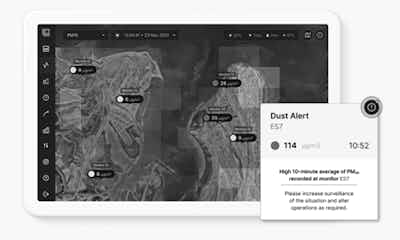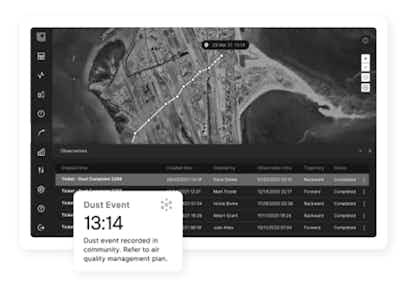Environmental impact and sustainability have become more important than ever before. Industry is constantly pivoting to comply with continuously evolving regulations and standards governing the release of air pollutants, and emissions monitoring is a key element in this process. However, what does it mean to do this ‘proactively'?
Proactive emission monitoring has emerged as a critical measure to control the emissions of harmful pollutants from industrial plants and facilities. Let’s explore what proactive emissions monitoring is, why it is important, and how technology is being used to strengthen this process.
Understanding proactive emissions monitoring
Firstly, let's understand what proactive emissions monitoring is: It is a continuous environmental monitoring process that involves deploying environmental monitoring sensors and hardware to track and report on pollutant emissions in real-time. This process enables industrial facilities to identify the sources of emissions, assess their impact on the environment and local community, and take necessary steps to minimise their impact.
Proactive emission monitoring provides industrial operators and municipalities with the visibility they need to understand the behaviour of air quality emissions at their site, avoid impact with local communities and ensure compliance with their site’s regulatory requirements.

Unforeseen emissions impact from industrial facilities can lead to several problems for the operators including regulatory fines and community complaints.
Importance of proactive emissions monitoring
One of the most visible and immediately obvious types of emissions is particulate matter—tiny particles of solid or liquid droplets that can be inhaled deep into the lungs. Commonly, these are associated with industrial processes such as burning fossil fuels, road dust, and construction. When communities notice an increase in airborne dust, it can lead to concerns about respiratory diseases, asthma, and overall public health.
However, for many types of emissions such as VOCs, seeing the problem is not possible because the pollutant is invisible. Emissions are also often highly variable over time and their impact strongly depends on weather conditions.
In short, acting on emissions to mitigate risk requires information. It's not enough to just know that there is an issue, it’s imperative to know how to focus the action efficiently on the cause of the problem.

The emergence of proactive emissions monitoring technology has enabled industrial operators and municipalities to act on emerging emissions risk quickly and effectively.
Role of technology in proactive emissions monitoring
Initially, proactive emission monitoring systems seemed to be driven by the need for industry to improve environmental performance. New methods were needed to achieve existing ambient air quality compliance requirements or new compliance requirements were introduced that required new approaches to ambient air quality management.
Today effective emission monitoring is becoming crucial for industrial to reduce their environmental impact. Failing to do so can lead to increased regulatory fines, negative publicity and damage to a company's reputation.
The emergence of advanced technological solutions has significantly improved the performance of proactive emission monitoring. With sophisticated software solutions, operators can monitor their emissions in real-time and predict weather risk.
Air quality compliance typically focusses on emissions monitoring data, maintaining records and reporting emissions data based on pollutants outlined. However, this information can provide powerful insights to create alerts for operational guidance to incorporate air quality compliance efforts while also minimising costly downtime period.
A comprehensive understanding of specific weather data and its influence on pollutants can be combined with licence conditions to tailor alerts specific to facility requirements. After deployment and initial refinement, these alerts will begin to provide precise operational decision support, while also allowing facilities to ignore what doesn’t matter.

Proactive emissions monitoring technology enables users to identify the source of problematic impact events.
Benefits of proactive emission monitoring for industrial operators
Proactive emission monitoring has numerous benefits for industrial operators and municipalities. It reduces operational costs because it reduces the risks of regulatory fines and losses associated with non-compliance. Additionally, it helps improve the company’s reputation, and demonstrate environmental responsibility to customers and stakeholders.
Therefore, companies that incorporate proactive emissions monitoring as a key element of their environmental management strategy, ultimately improve their bottom line while contributing to a sustainable and healthy environment.
Unlocking value beyond compliance with proactive emissions monitoring solutions
As environmental regulations continue to evolve, industrial operators must keep up with these changes to avoid fines and reputational damage. By adopting smart alerting systems, industrial facilities can not only maintain compliance but also improve the quality of their products and services, reduce operating costs, and enhance safety for employees and the public.
Envirosuite’s Omnis solution assists operators from a growing number of operations around the world with air quality management, mitigating emissions impact and daily management of complex infrastructure.
Proactive emissions monitoring with Omnis can help your facility:
Identify problematic emissions sources to maintain compliance and reduce cost of mitigation.
Increase operational efficiency and minimise lengthy stoppages from breaches or non-compliance events.
Respond to community concerns about environmental impact and build social license to operate.
Get in touch with us today to find out more.
